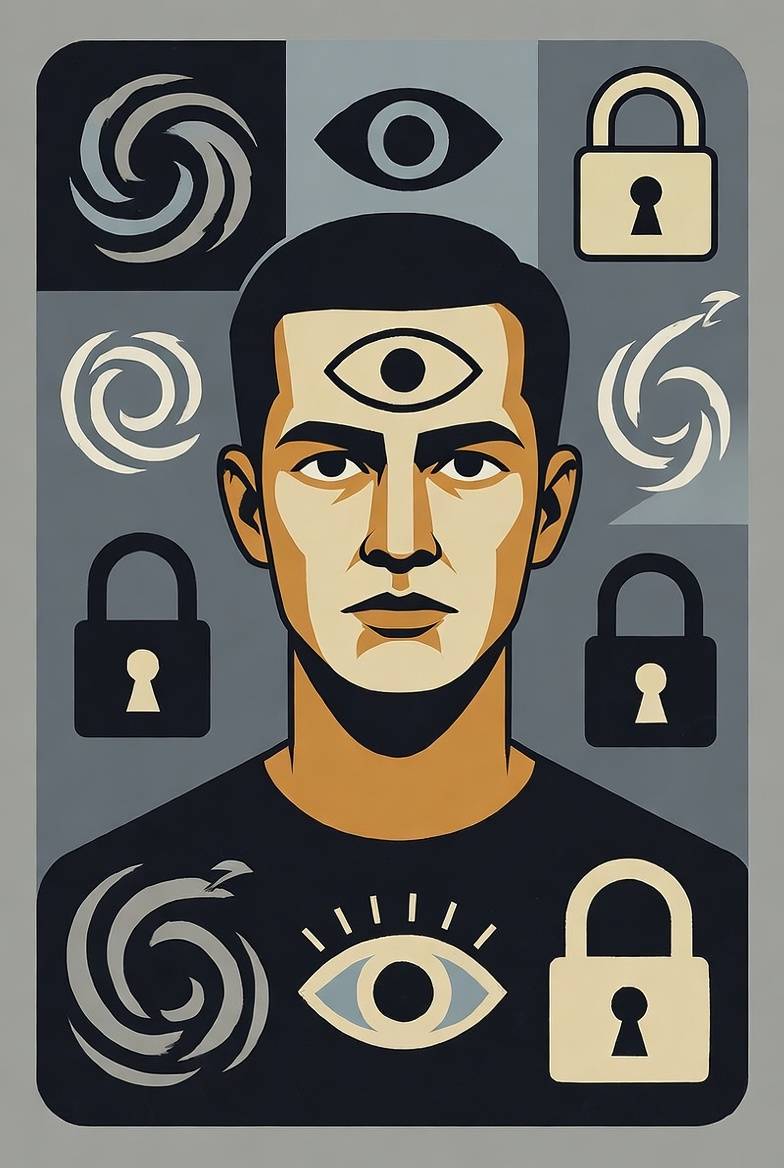Co-Designing with Machines: How AI Became Every Developer’s Teammate
By Spenser Robinson - November 2, 2025

In the fast-evolving landscape of web development, a profound shift is underway. The year is 2026, and the long-held paradigm of developers working in isolation, meticulously crafting every line of code, is rapidly becoming a relic of the past. In its place, a new model of collaboration has emerged, one where artificial intelligence has transitioned from a mere assistant to an indispensable teammate. This is the era of co-design, where human creativity and machine intelligence converge to create digital experiences that are not only smarter and faster but also more intuitive and user-centric than ever before.
The journey to this new frontier has been a gradual one, marked by a series of technological advancements that have redefined the very nature of web development. What began with simple code completion and syntax highlighting tools has blossomed into a sophisticated ecosystem of AI-powered platforms that actively participate in the creative process. These are not just tools that automate repetitive tasks; they are collaborators that offer real-time design suggestions, generate complex wireframes from simple sketches, and even conduct automated A/B testing to optimize user engagement. The result is a symbiotic partnership where developers are freed from the drudgery of mundane coding, allowing them to focus on higher-level strategic thinking and creative problem-solving.
This article explores the multifaceted ways in which AI has become an integral part of the modern web development workflow. We will delve into the rise of the AI teammate, examining how these intelligent systems are augmenting the capabilities of developers and designers alike. We will also explore the practical applications of generative AI, from concept to code, and discuss how intelligent automation is enhancing efficiency and streamlining the development process. Finally, we will look at the democratization of design, a trend that is making web development more accessible to a wider audience, and consider the future possibilities of this exciting new era of human-AI collaboration.
The Rise of the AI Teammate
The transition from AI as a tool to AI as a teammate is not just a semantic shift; it represents a fundamental change in the way we approach web development. In this new paradigm, AI is no longer a passive assistant that simply executes commands. Instead, it is an active participant in the creative process, offering insights, suggestions, and solutions that augment the capabilities of its human counterparts. This collaborative approach is what we call UX 3.0, a new way of thinking about user experience design where AI is embedded in the core of the creative process.
One of the key characteristics of UX 3.0 is the development of predictive and context-aware interfaces. These are systems that can anticipate user needs based on a variety of factors, including the time of day, the user's location, their device, and their past behavior. By analyzing these data points, AI can provide developers with valuable insights into user preferences and pain points, enabling them to create more personalized and intuitive experiences. For example, an e-commerce website might use AI to recommend products based on a user's browsing history, while a news website might use it to surface articles that are relevant to a user's interests.
Another important aspect of UX 3.0 is the co-operative relationship between humans and AI. In this model, designers and developers work alongside AI-powered tools throughout the entire development lifecycle, from ideation and iteration to optimization and deployment. This collaborative approach allows for a more fluid and dynamic workflow, where ideas can be quickly prototyped, tested, and refined. For example, a designer might use an AI-powered tool to generate multiple design variations of a webpage, which can then be tested with real users to determine the most effective layout.
Finally, UX 3.0 is characterized by ecosystem-driven experiences that break down the silos between different devices and platforms. In this interconnected world, users expect a seamless experience as they move from their laptop to their smartphone to their smart speaker. AI plays a crucial role in enabling these multi-modal experiences, allowing for a more natural and intuitive interaction with technology. For example, a user might start a task on their laptop and then seamlessly transition to their smartphone to complete it, with the AI ensuring that the context and state of the task are preserved across both devices.
Generative AI in Action
Generative AI is at the forefront of the co-design revolution, offering a powerful set of tools that can automate and accelerate the creative process. These are AI models that can create original content, such as images, text, and even code, from a set of input parameters. In the context of web development, generative AI is being used to create everything from layouts and color palettes to typography and user interface components.
One of the most exciting applications of generative AI is in the area of design exploration. With a few simple prompts, a designer can use a generative AI tool to create a wide range of design concepts, each with its own unique visual style and layout. This allows for a much more rapid and iterative design process, where ideas can be quickly visualized and evaluated. For example, a designer might ask an AI to generate a landing page for a new product, specifying the desired tone of voice, target audience, and key messaging. The AI would then produce a variety of design options, which the designer could then refine and build upon.
Generative AI is also being used to automate the process of coding. Once a design concept has been finalized, an AI-powered tool can be used to generate the corresponding HTML, CSS, and JavaScript code. This not only saves a significant amount of time and effort but also helps to reduce the number of manual coding errors. For example, a developer could use an AI tool to convert a design file from a program like Figma into a fully functional and responsive webpage, complete with all the necessary code and assets.
Intelligent Automation and Workflow Enhancement
In addition to its creative capabilities, AI is also being used to automate a wide range of tasks in the web development workflow, from content management and testing to search engine optimization. This intelligent automation is helping to streamline the development process, freeing up developers to focus on more strategic and creative work.
One area where intelligent automation is having a significant impact is in the creation of CMS-powered content blocks. These are reusable components that can be easily added to a webpage, such as a hero banner, a product grid, or a contact form. With AI, these content blocks can be automatically generated and populated with relevant content, saving a significant amount of time and effort. For example, an AI tool could be used to create a product grid for an e-commerce website, automatically pulling in product images, descriptions, and prices from a database.
Another area where AI is making a difference is in the area of testing. Automated testing has been a part of the web development process for many years, but AI is taking it to a new level. AI-powered testing tools can now be used to automatically test a website across a wide range of devices and browsers, ensuring that it is fully functional and responsive. These tools can also be used to identify and flag potential usability issues, such as broken links, slow loading times, and accessibility problems.
The Democratization of Design
Perhaps one of the most significant impacts of AI on web development is the democratization of design. In the past, creating a professional-looking website required a significant amount of technical expertise and design skill. However, with the advent of AI-powered website builders, it is now possible for anyone to create a beautiful and functional website, regardless of their technical background.
These website builders, such as Wix and Squarespace, use AI to guide users through the design process, offering a wide range of templates, layouts, and design options. They also provide a simple drag-and-drop interface that makes it easy to add and arrange content on a page. The result is a much more accessible and inclusive approach to web design, where anyone with an idea can bring it to life online.
The Future of Co-Design
The era of co-design is still in its early stages, but the potential for human-AI collaboration in web development is vast. As AI technology continues to evolve, we can expect to see even more sophisticated and intelligent tools that will further augment the capabilities of developers and designers. In the future, we may see AI systems that can not only generate code but also reason about it, identifying potential bugs and security vulnerabilities before they are even written. We may also see AI-powered design tools that can understand and interpret human emotions, allowing for the creation of more empathetic and engaging user experiences.
Ultimately, the goal of co-design is not to replace human creativity but to enhance it. By working in partnership with AI, developers and designers can unlock new levels of creativity and innovation, creating digital experiences that are not only more efficient and effective but also more human-centric. The future of web development is a collaborative one, and those who embrace this new paradigm will be the ones who shape the digital world of tomorrow.
References
1.Future Digital. (2025, October 27). The Future of Ai in Web Design: Trends to Watch in 2026. Future Digital. https://futuredigital.ae/blog/ai-web-design-future-trends-2026
2.Kumar S, M. (2025, September 27). UX Trends to Watch in 2026: Designing for Empathy, Intelligence, and Experience. Bootcamp. https://medium.com/design-bootcamp/ux-trends-to-watch-in-2026-designing-for-empathy-intelligence-and-experience-1bd276fdf7e6

About the author
Spenser Robinson
Professional UX Designer, Entrepreneur and overall creative. Spenser has been dedicated to sharing stories from our community and creating opportunities for others through various mediums. Founder of Black Business Mine Publishing House, a company that creates content distinctly for OUR community, while offering business consulting, and comprehensive web design and development services.
MILLIONAIRE WEB SERVICES | BOOK FREE WEBSITE CONSULTATION | HIRE ME AS YOUR DEVELOPER



